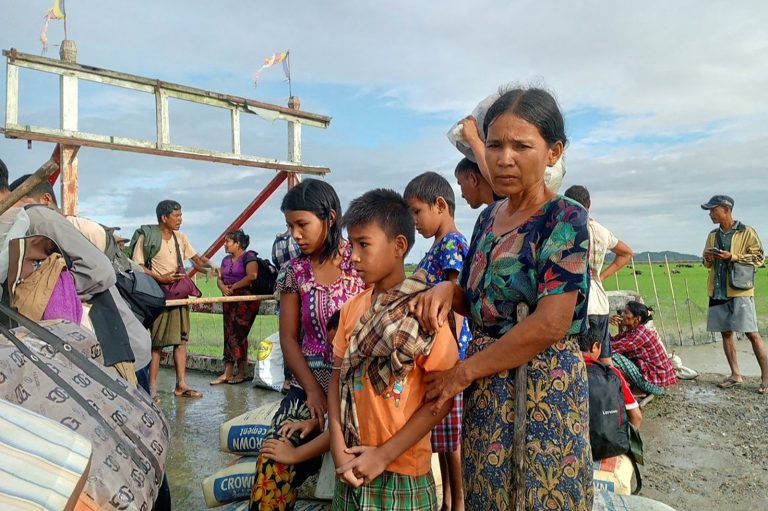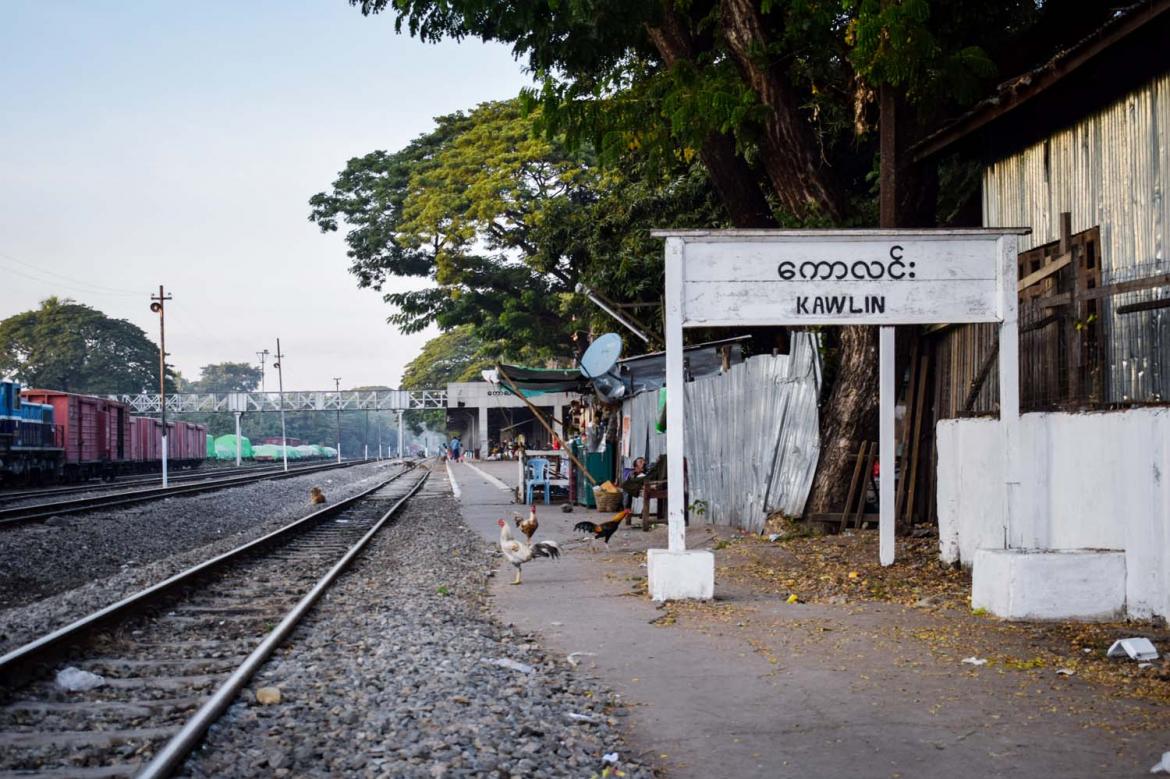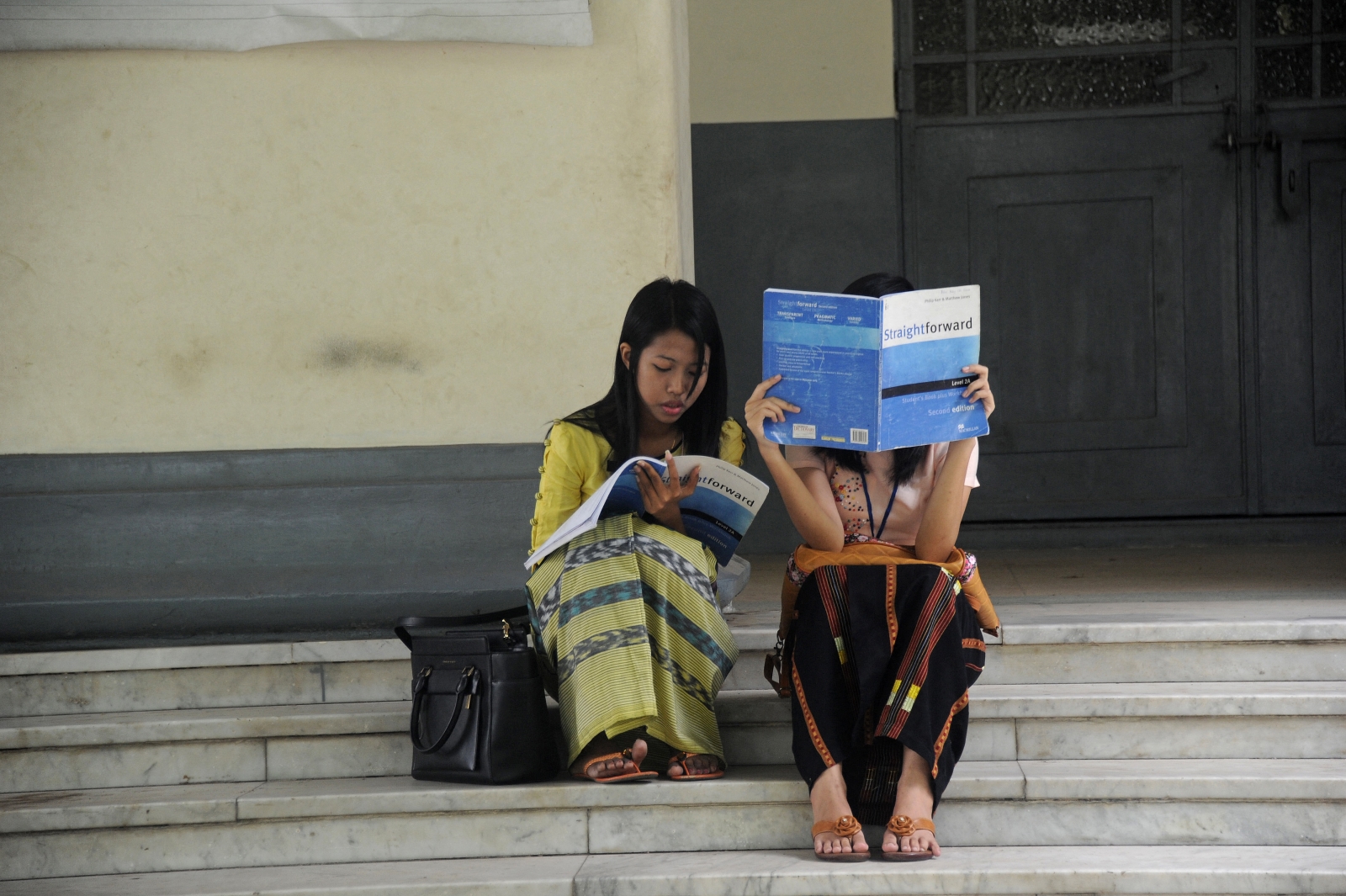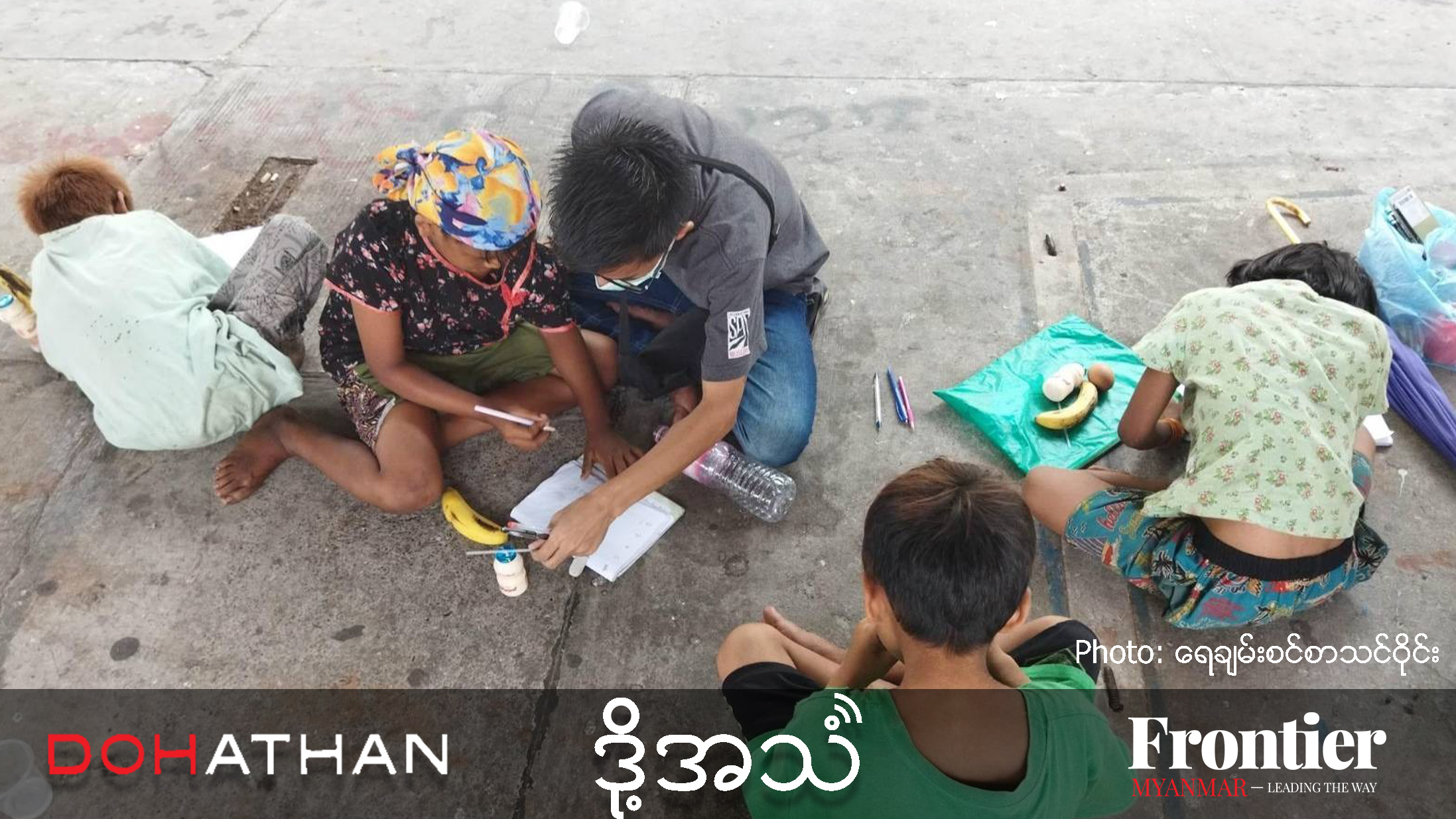Students living in areas under the control of the Kachin Independence Organisation face barriers to furthering their studies and careers.
By EMILY FISHBEIN | FRONTIER
WHEN CONFLICT erupted in Kachin State in 2011, San Bu Ra, now 23, was a grade nine student at a Myanmar government school. The fighting between the Kachin Independence Organisation’s armed wing, the Kachin Independence Army, and the Tatmadaw reached her village of Daw Hpung Yang, in Momauk Township, later that year, and San Bu Ra and her family fled to the Je Yang internally-displaced person camp near the KIO’s headquarters at Laiza, on the border with China.
Like tens of thousands of civilians in the state, the conflict disrupted her education. Nonetheless, she managed to graduate from Laiza High School, the nearest high school to the camp. In 2014, she passed a matriculation exam administered by the KIO Education Department and then continued her schooling in Mai Ja Yang, a border town south of Laiza that serves as an education hub for students living in areas governed by the KIO.
After graduating from the Institute of Liberal Arts and Sciences – one of four higher education institutions in Mai Ja Yang – in 2017, San Bu Ra returned to Je Yang IDP camp. She said she “felt lost, like I had no future”. Then she learned that the Kachin Theological College and Seminary in Myitkyina, the state capital, offered a foreign language course, following which students could study abroad through a partnership with a Christian college in an Asian country.
It seemed like a way towards a better future.
Support more independent journalism like this. Sign up to be a Frontier member.
She enrolled at KTCS and quickly shone in her studies. Following completion of the one-year course, she went to the country’s embassy in Yangon with her classmates in February of 2018. Out of a class of 40, only San Bu Ra and one other student were denied permission to study abroad. The reason, she said she was told, was that the embassy did not recognise her matriculation certificate because it was not issued by the Myanmar government.
Several months later, San Bu Ra’s teacher told her that the embassy had agreed to accept her existing matriculation certificate should she re-apply with the next batch of students a year later. Yet, when San Bu Ra re-applied for the visa, she was told that the person who had passed on this information had left. Her second visa application was rejected.
In May, San Bu Ra passed the 11th grade placement test at Myitkyina’s Basic Education High School No. 1. She plans to sit the matriculation exam, this time in the Myanmar government system, in March 2020. By then, it will be six years since she passed the KIO Education Department’s exam. If she passes the Myanmar government’s matriculation exam, she will apply for a visa for the third time. Asked how she felt about the situation, San Bu Ra told Frontier, “I feel very sad, like the time has been wasted for continuing my higher education.”
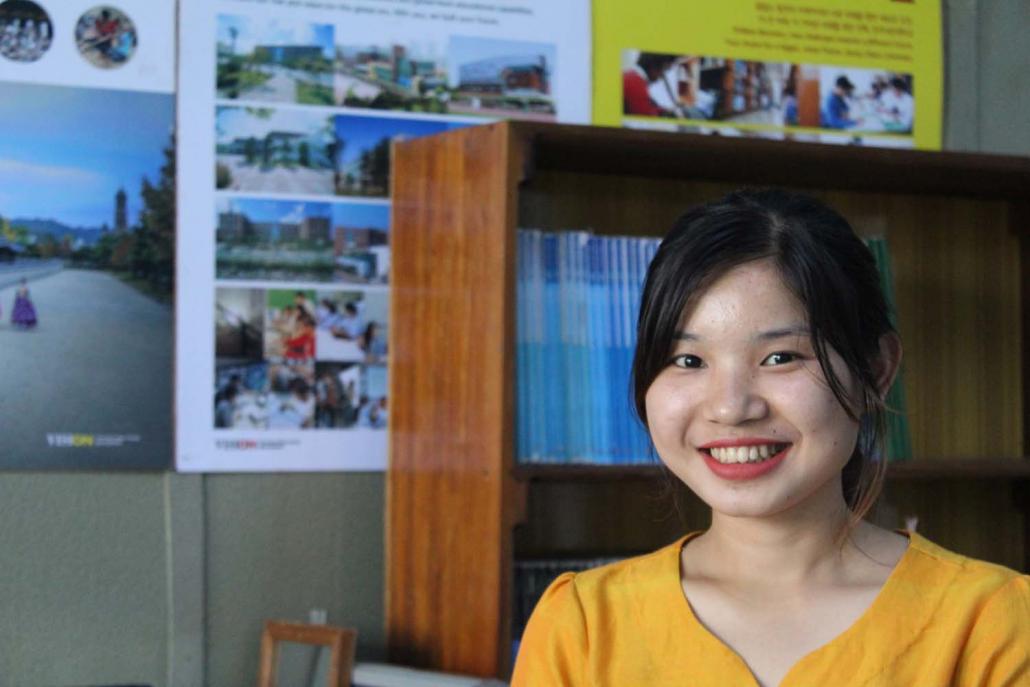
San Bu Ra, 23, was a grade nine student when fighting erupted in 2011. In May she passed an exam to transfer into the Myanmar government education system. (Emily Fishbein | Frontier)
Education amid war
San Bu Ra’s plight reflects the barriers that students living in KIO-controlled areas face in pursuing further studies. While higher education options are available in KIO areas, none of them offer a university degree. There are no universities in Myanmar, and few abroad, that recognise the results of KIO-administered matriculation exams.
One option students have is to transfer from the KIO system into the Myanmar state system, as San Bu Ra did. Although Jinghpaw is the main language of instruction, the KIO uses the same curriculum as Myanmar government schools – with the addition of a Jinghpaw language subject – and the textbooks are in Burmese.
Lasham La Nu, who was headmaster of Myitkyina’s Basic Education High School No. 1 from 2005 to 2012, and currently works at a boarding house for students travelling from remote areas to attend school in Myitkyina, said students wishing to transfer to a Myanmar government school have to submit a transfer letter from their previous school and take a placement test, offered every June. Those who pass can proceed to the next grade, while those who fail must enroll in the most recent grade they’ve completed. Those who wish to sit for the matriculation exam must at least attend 11th grade in the Myanmar government system, even if they have already passed a matriculation exam offered by the KIO.
Lasham La Nu said the KIO Education Department and Myanmar’s Ministry of Education cooperated before 2011 to support students from schools in KIO areas to transfer to Myanmar government schools. Myanmar government schools in Myitkyina also offered a classroom of separate instruction to help students from KIO areas integrate.
Lasham La Nu and Marip Naw Htoi, director of the KIO Education Department based in Laiza, said that communication between the two education departments stopped with the resumption of conflict. While students could still transfer, they had to arrange it themselves. Conflict made it less safe and more costly for IDPs – who had often been displaced to remote areas – to travel to Myitkyina for the annual placement test. Lasham La Nu said the number of students he saw transferring from KIO schools to schools in Myitkyina markedly declined after conflict resumed.
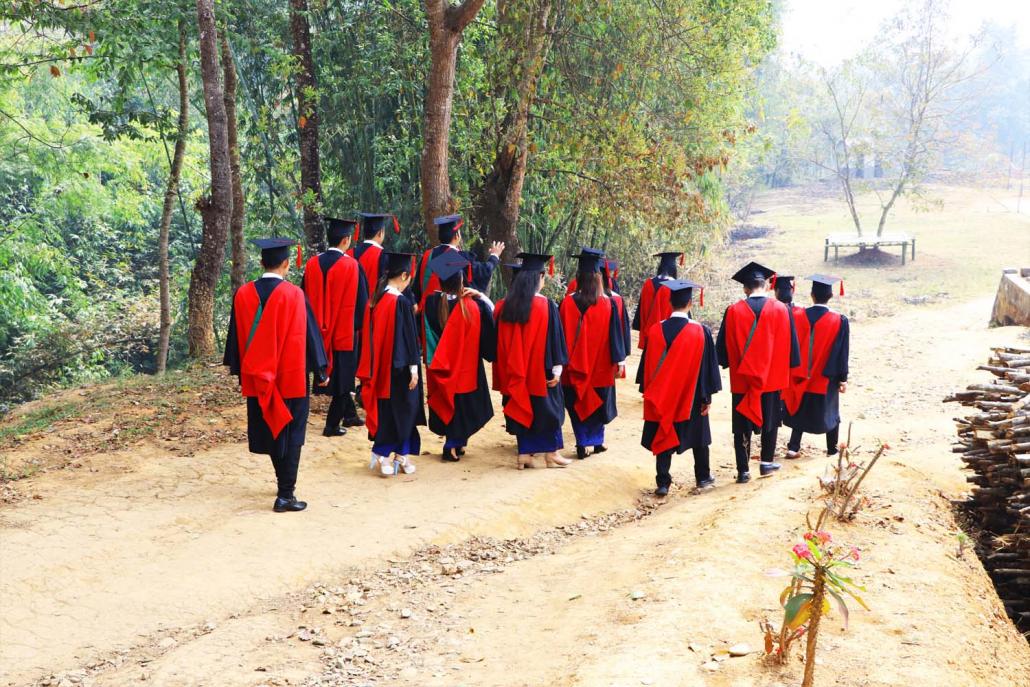
Students from the Institute of Liberal Arts and Sciences at Mai Ja Yang after a graduation ceremony in March. (Supplied)
A knowledge drain
In KIO-controlled territory, several schools offer various courses of higher education. Apart from the international donor-funded Institute of Liberal Arts and Sciences (ILAS), which San Bu Ra attended, Mai Ja Yang also has a Federal Law Academy, open to students of different ethnic minorities from around the country, as well as two KIO-run schools, the Mai Ja Yang Institute of Education, a teacher training school, and Mai Ja Yang College. The KIO also operates four higher education schools in Laiza, which focus on nursing, agriculture, civil service, and military training.
Students from KIO-controlled areas who wish to subsequently pursue higher education in areas under Myanmar government control are only able to enroll in a handful of private schools that offer diploma courses but not degrees. They are also able to attend religious studies courses at KTCS or Kutkai Theological College in northern Shan State.
Recruiting and retaining qualified teachers can be challenging, said Nkhum Lazing Zau Seng, the acting principal and academic dean of ILAS in Mai Ja Yang. Former ILAS and Mai Ja Yang College teacher Seng Myu Awng, 29, explained, “Brave young people go to KIO areas to teach, but cannot teach for long … When they are teaching, their friends are increasing their knowledge and opportunities, while they are gradually left behind. They want to move up, find better opportunities, so there is a knowledge drain.”
Marip Naw Htoi of the KIO Education Department said the KIO has established relationships with a few universities in China and India to increase opportunities for graduates to further their education. Nkhum Lazing Zau Seng introduced an American Common Competency Standard curriculum at ILAS in 2016 and has developed links with Thabyay Education Foundation’s general education diploma programme in Yangon, as well as universities in Thailand, India, and Bangladesh, which have offered scholarships to ILAS alumni.
One scholarship recipient is Htu Bu, 22, who was attending a Myanmar government school in her native Kunglaw village when the fighting in Kachin resumed in 2011. Like San Bu Ra, she fled to Je Yang IDP camp, graduated from Laiza High School, and passed a KIO-administered matriculation exam in 2014, before studying at ILAS.
Htu Bu said that upon graduating from ILAS, she found her professional options “so limited. The only things I could do were to join the KIA, become a school teacher or healthcare worker in a KIO area, be a religious leader, or run a personal business.” She said that while there are some NGO jobs in KIO areas, “Without a [university] degree, we have few chances to get a higher position … the good positions go to bachelor’s and master’s degree holders from Myanmar government areas.”
To enhance her employment prospects, Htu Bu enrolled in an 18-month diploma programme at Kachinland School of Arts and Sciences, a private institution in Myitkyina where she received a full scholarship. After graduating in June 2018, she returned to ILAS to work as a dormitory attendant. When the school year ended, she decided to try to find work in China, where she heard she could earn CNY2,000 (K430,000) a month.
Htu Bu, however, was able to shelve her plans to go to China when she and seven other ILAS alumni received scholarships to study at the Asian University for Women, in Chittagong, Bangladesh. She began classes there in August.
Lazing Zau Seng said most students in KIO areas do not fare as well as Htu Bu, and face long-term professional disadvantages because of their limited educational qualifications. “Even if they pass the matriculation exam, they see they have a lack of job opportunities, they lack confidence; they want to study many things and they can’t apply. They lose their vision, their hope,” he said.
As a result, many go to China to find work, despite the risks of human trafficking and exploitation. “If they don’t go, they don’t have income … what will they do?”
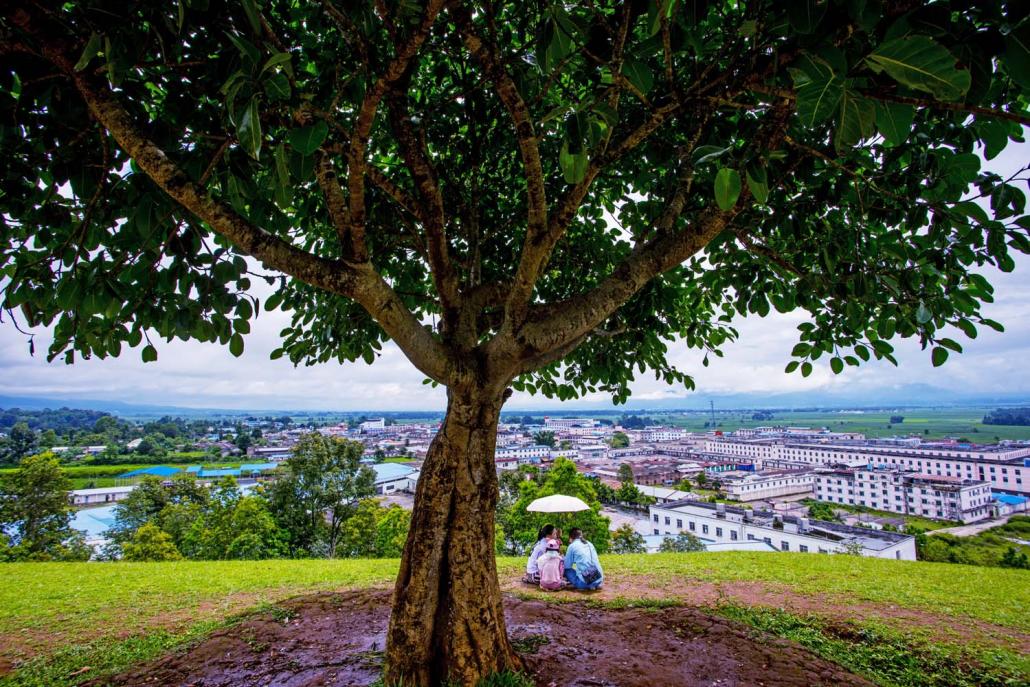
The town of Mai Ja Yang is an education hub in Kachin Independence Organisation governed areas. (Hkun Li | Frontier)
‘It is just our fate’
Naw Ja, 24, was in 10th grade when fighting came to Laiza, his hometown, killing a school friend and his pastor. His family lived in a field before seeking refuge in Je Yang IDP camp only a few months before Naw Ja was due to sit his matriculation exam. He studied to the sounds of war, but managed to pass. To support his family he spent the next three years working at a bottled water factory and then at a petrol station, and in 2016 enrolled at the Federal Law Academy in Mai Ja Yang. After completing the Law Academy diploma course, he enrolled at the Ramprat Shanan Education and Leadership Program, a school in Myitkyina supported by the Kachin Baptist Convention, which he now attends. Naw Ja hopes to one day study abroad, but “because of the war, I don’t know how I can go forward with my education,” he told Frontier.
In addition to financial hardship, Naw Ja said fear of being arrested under section 17-1 of Myanmar’s colonial-era Unlawful Associations Act dissuades some students in KIO-controlled areas from pursuing studies in Myanmar government-controlled areas.
Some Kachin have been jailed or detained under the act for allegedly being in contact with the KIO or the KIA. “Myanmar is not safe for people who come from Laiza,” said Naw Ja in reference to the act. He added that some Kachin living in KIO-controlled areas also face difficulties applying for a national identity card to facilitate travel to areas under government control.
Naw Ja said these obstacles cause many young Kachin to lose hope for their further studies. “There are many who went to school [in a KIO-controlled area] but cannot attend school [in a government-controlled area]; that’s why they don’t want to try hard,” he said. “They just pretend like they don’t need to advance their education. Some people just think life is like this; it is just our fate.”
Asked about the impact of the resumption of conflict on Kachin youth, Naw Ja said, “Our education, mainly, was destroyed.”
Lazing Zau Seng is concerned that disparities in education could have a lasting impact on social harmony and the peace process. “When citizens at the grassroots level don’t have the opportunity to access quality education, they develop an inferiority complex. They think, ‘We are from this IDP camp, that’s why people look down on us and don’t want to give us good opportunities’.
“After one or two decades, if this goes on, the ethnic [Kachin] people won’t accept working with Burmese people or living together in peace and harmony. They won’t want to work [together], they won’t want to live [together], they won’t want to speak Burmese. At that time, our country’s future … Oh! I dare not to think about it.” Lazing Zau Seng sees education as the key to social cohesion. “If we can’t un-implant the hatred in their mind … how can we build peace in the future?” he asked.
For San Bu Ra, who still dreams of studying abroad, “It may be difficult for the Burmese government and the KIO to understand each other because of the ongoing war, but I think that politics and education are two different things … The Burmese government should allow the same opportunities for further education to those who have been studying in KIO areas … [so that] students can freely pursue their hopes and dreams.” – Additional reporting by JK and Saulang Ting Ying



